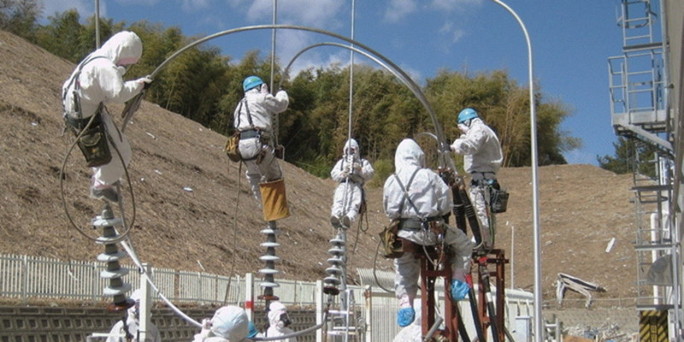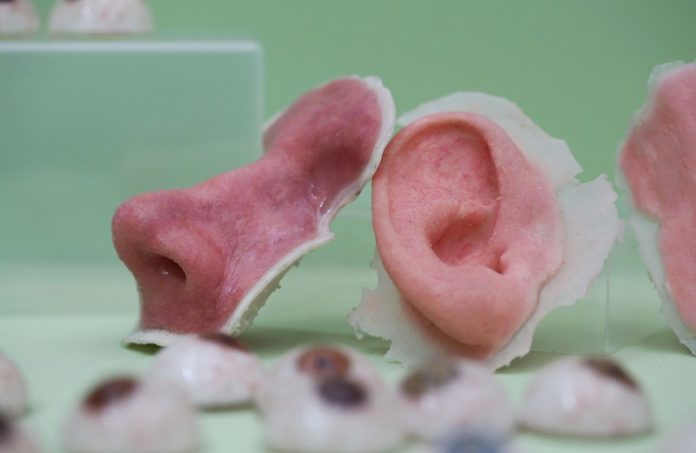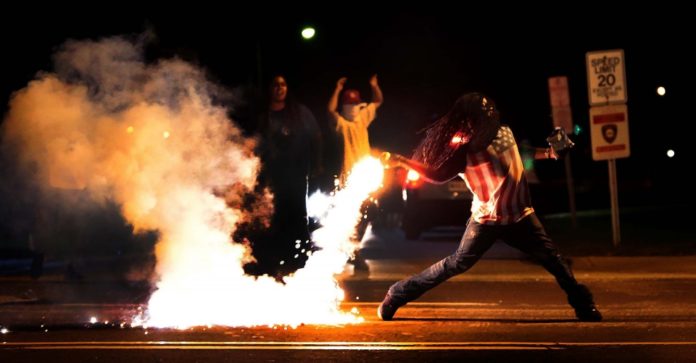Written by: S.S.
The Fukushima Dai – Ichi Nuclear Power Plant was severely damaged by the earthquake and tsunami in Japan in 2011.
This report is divided chronologically, in before and after the catastrophe.
The Fukushima power plant might not be in the place you’ve heard before, but you might know something about it or might have a small clue about the plant. This plant was popular among the Facebook news feeds in 2011 as it was revealed that there is some radiation in the ocean or in the ground level of the Fukushima plant which could have been the major problem to the earth. It could have caused a meltdown and changed the earth or displaced people of the northern hemisphere.
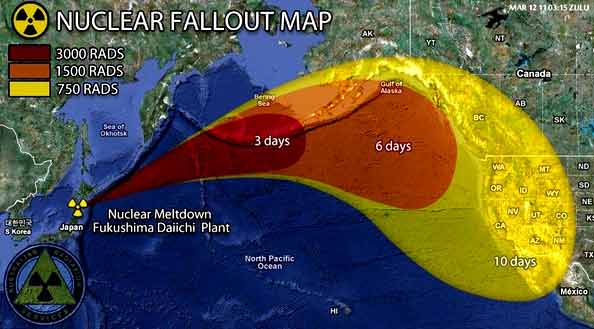
Fukushima radiation nuclear fallout map
Unfortunately, no one knows the whole truth about this, but the research is continuing and some of the main points are evaluated here:
Tokyo Electric Power Company [TEPCO] had predicted that a tsunami would occur, based on the data from 1960, they predicted that it would arrive with a 8 meters tall wave and they predicted that the plant would not bare this event. This report was published by TEPCO just 4 days before the tsunami occurred. But due to no seismic activity or prediction no measurements were taken.
TEPCO also revealed that 300 tons of radiated water has been leaking in to the sea Every DAY Since 2011, but there is a no valid proof and no one really knows what might happen in the coming years.
In the 1980s and 1990s the top 5 executives resigned from TEPCO because the reactors failed to qualify the safety test which resulted in some cracks in them as well. But in 1999 two workers were killed due to the chain reaction as the employees lacked protection and gear.
Cesium-137, Cesium-134, Strontium-90, and Iodine-131 are all radioactive poisons currently being released into the environment and contaminating the water supply in the Fukushima prefecture.
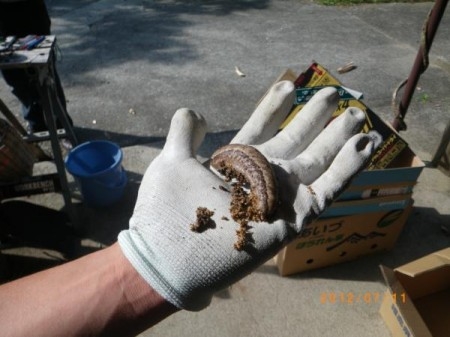 This mutated slug was found near a damaged Fukushima reactor
This mutated slug was found near a damaged Fukushima reactor
The report also stated that these chemicals are in levels of acceptance but few areas show that these chemicals are in dangerously high doses.
In 2013 Japan referred this event as a serious incident on an international scale as the leaks were estimated to be around 300,000+ litres of radioactive water which were directly deposited into the ground water and the nearby ocean.
After few weeks, TEPCO came to address this problem and researchers as well as experts started working on this problem.
Japan’s government is now keen to take over this issue as leaks were found in August of 2012 due to the carelessness of the TEPCO which is not able to keep this situation under control.
The International Atomic Energy Agency gave this event a disaster rating nearly same as the Chernobyl 7 out of 10 and the highest marks a nuclear incident can receive.
TEPCO being aware that the tsunami would destroy parts of the Plant took measures when the tsunami hit the nuclear plant, but all went down in vain as it didn’t have experience or the manpower to have the site under control. TEPCO tried to limit the problems by building storage tanks of radioactive water that were damaged again and leaked over 300 tons of radiated water which created a larger problem and resulting in radioactive water in the ground water as well the nearby farm lands.
Robert Alvarez a former senior policy advisor to the Deputy assist for National security and the environment of the US department of energy said that –
“It is my understanding that of the 1,532 spent fuel assemblies in reactor No. 304 assemblies are fresh and unirradiated. This then leaves 1,231 irradiated spent fuel rods in pool No. 4, which contain roughly 37 million curies (~1.4E+18 Becquerel) of long-lived radioactivity. The No. 4 pool is about 100 feet above ground, is structurally damaged, and is exposed to the open elements. If an earthquake or other event were to cause this pool to drain, this could result in a catastrophic radiological fire involving nearly 10 times the amount of Cs-137 released by the Chernobyl accident.”
The only difference you can find from the Chernobyl is that the reactor went cold after the massive radioactive fire, but Fukushima is still working and the core is just too hot to test and till now no one knows how to manage the core or the leaks.
The WHO [World health organization] released several reports on the FUKUSHIMA which concludes that there is radiation present in the ground water directly outside the plant. And Japans immediate response to this was to give everyone vicinity iodine pills which were efficiently handled and done quickly, saving many Japanese from this radiation. Some reports also show that increase in cancer in Fukushima residents is low but however few isotopes build up in the bones and vital organs over time and the only way to test whether the radiation is increased or not is by time long testing the residents of the city. 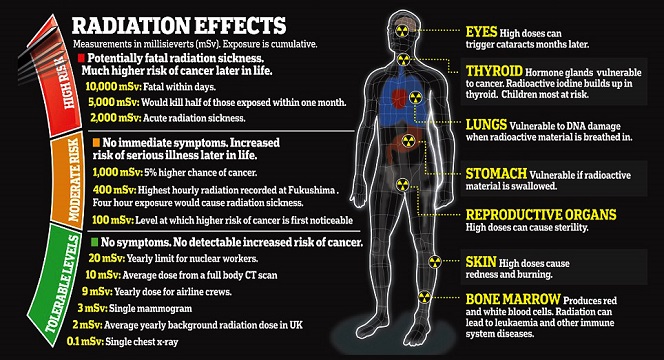
But to conclude FUKUSHIMA now, is dangerous. The 18 month project now started to remove the fuel rods from the damaged sector 4. If the connected pipes get broken or subjected to air, the resulting chain reaction and explosion could force the residents of Japan and the residents of many pacific islands and parts of west coast of America to evacuate. However there is no proof or correct evidence that this even will happen for sure.
More info:
___________________________________________________________________
Sources:
http://www.zerohedge.com/news/2013-09-13/tepco-official-admits-fukushima-out-control
http://www.tepco.co.jp/en/decommision/index-e.html


